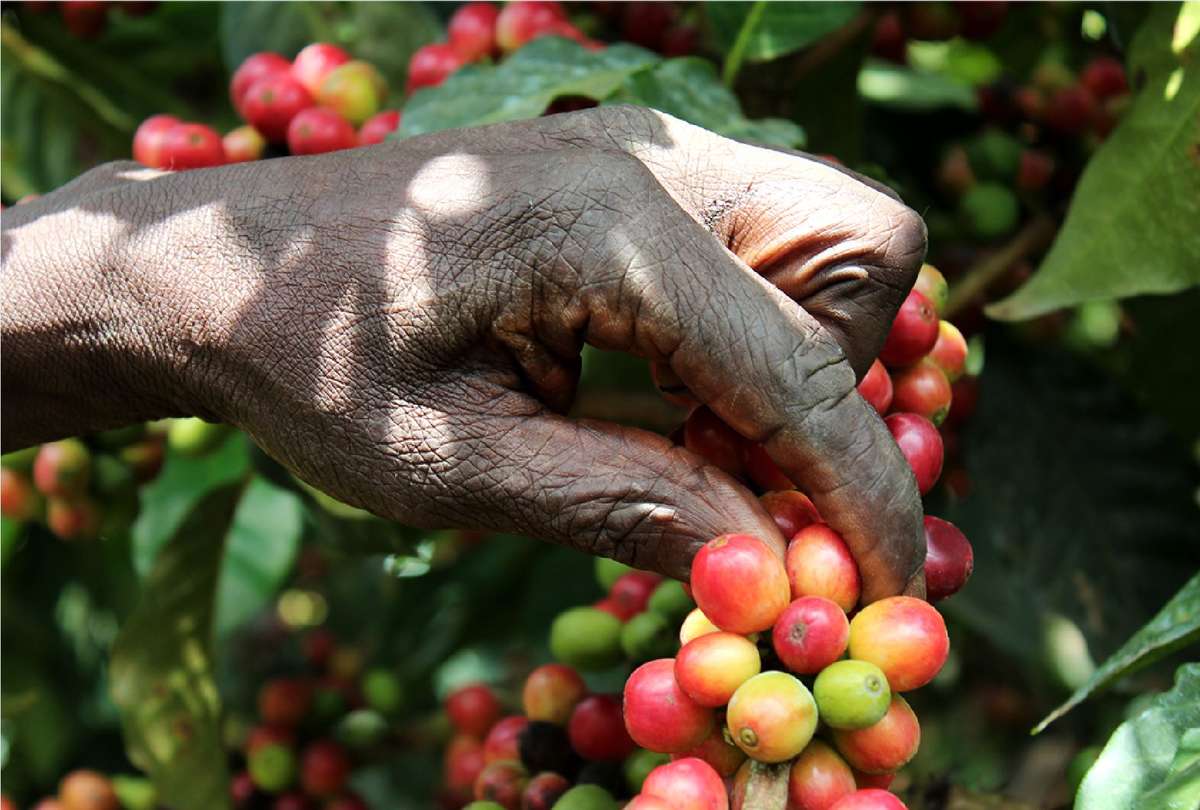Farming Practices

We don't create good coffee, we preserve it.
The coffee trade is long and slow. Coffees may be harvested in March but not arrive in the United States until May or June. To get that fresh cup of Kaldi's coffee to taste its best, we start by sourcing the world's finest coffees and working with farms and importers early in the process. That means constantly traveling to origin to find better coffees and let our farming partners know what we want. This creates a long-lasting feedback loop of quality and partnership.
Luckily, coffee is grown in many different places around the world, all residing between the Tropics of Cancer and Capricorn. Each of these places has its own set of cultural habits regarding coffee cultivation and a unique terroir that results in those subtle taste differences in your cup.

Coffee does grow on a tree. These trees produces small, grape-sized cherries that usually contain two seeds. These two seeds are what we will eventually roast and turn into coffee "beans."

To start with, different coffee producing regions grow different varieties of coffee that give each seed a unique flavor trait. Next, the coffee must be harvested from the trees. Picking ripe cherries instead of unripe cherries will vastly improve the final quality of a cup of coffee. Getting farmers to take this step of quality over quantity is one of the largest barriers to specialty coffee today, but it is a trend that has shown vast improvement in just a little bit of time.
After harvesting, the coffee fruit must be removed from the seeds. This process is done in a number of ways that involves fermentation, washing/cleaning, and drying. The type of processing used gives the coffee a very unique flavor and is usually based on cultural traditions. Read more about how processing changes the taste in your cup in our blog, "Coffee Processing & Your Cup".
Once the coffee beans are dry, they must go through a final milling process to remove a tough layer of skin surrounding the seed called parchment. The coffee is then sorted and cleaned.

Getting coffee to Saint Louis in a timely manner after harvest is also a challenge. The fresher the crop, the more delicious the cup. We have tried to improve upon this freshness by using new shipping materials that are less prone to aging, absorbing scents, and trapping moisture.
When the coffee finally arrives, we sample roast and cup it a number of times to determine a roast profile. Every coffee has inherent acidity and sweetness, and we strive to give you the best representation of both. All of the previous work can be undone by a bad roast, and we take our role in the process very seriously and with the utmost humility.

Our sample roaster

One exceptional beverage at a time, we push the story of coffee forward.

